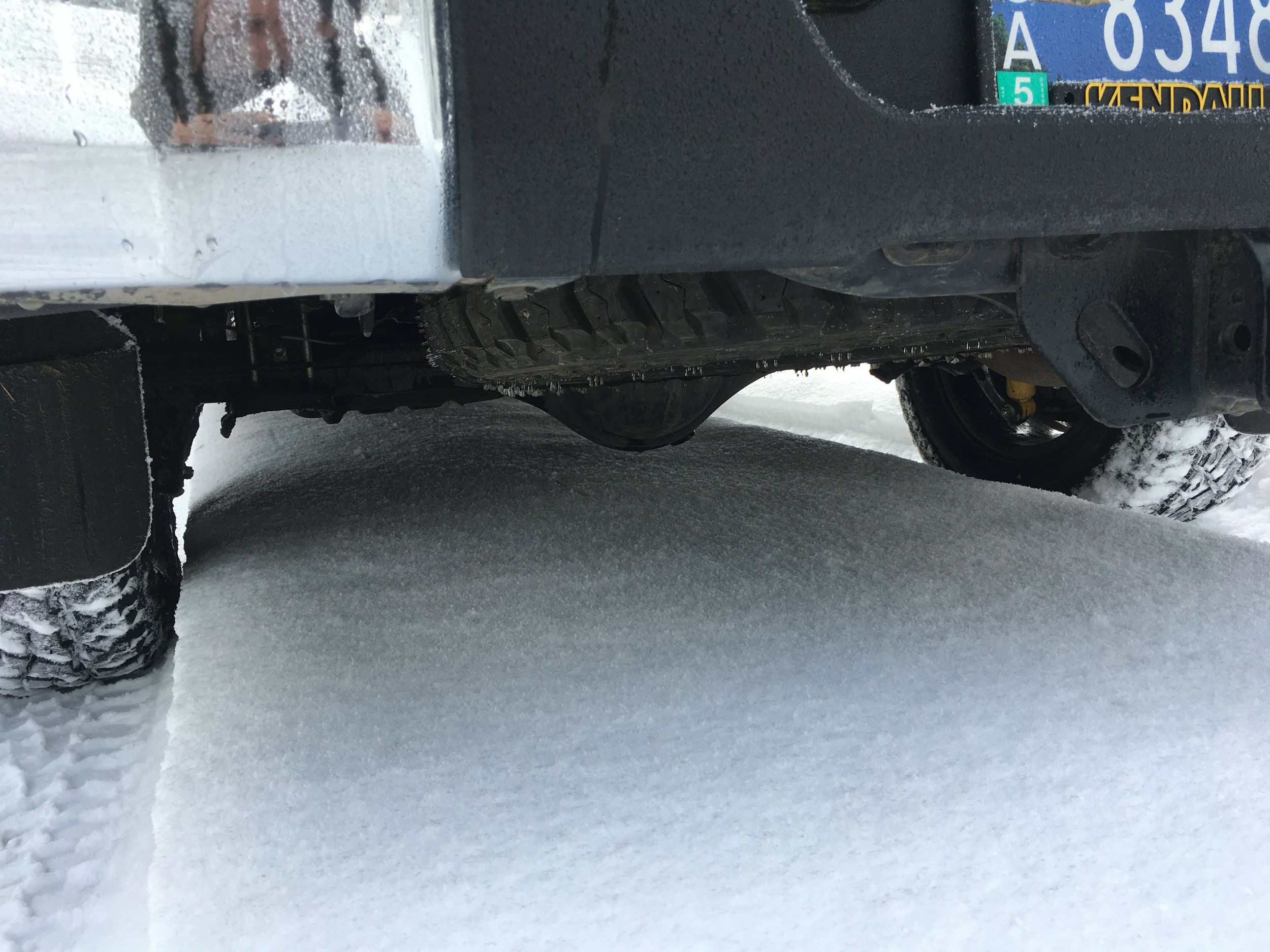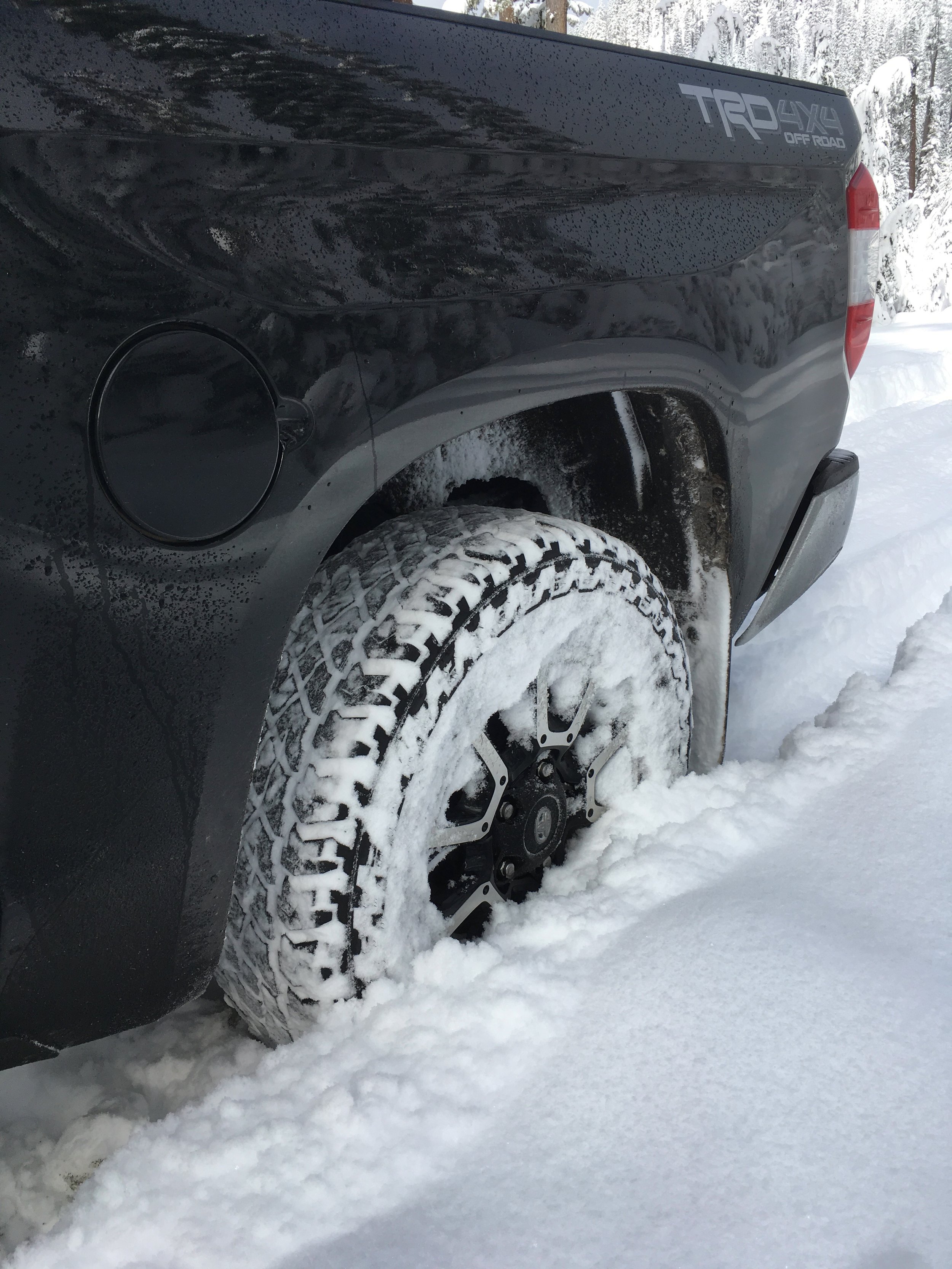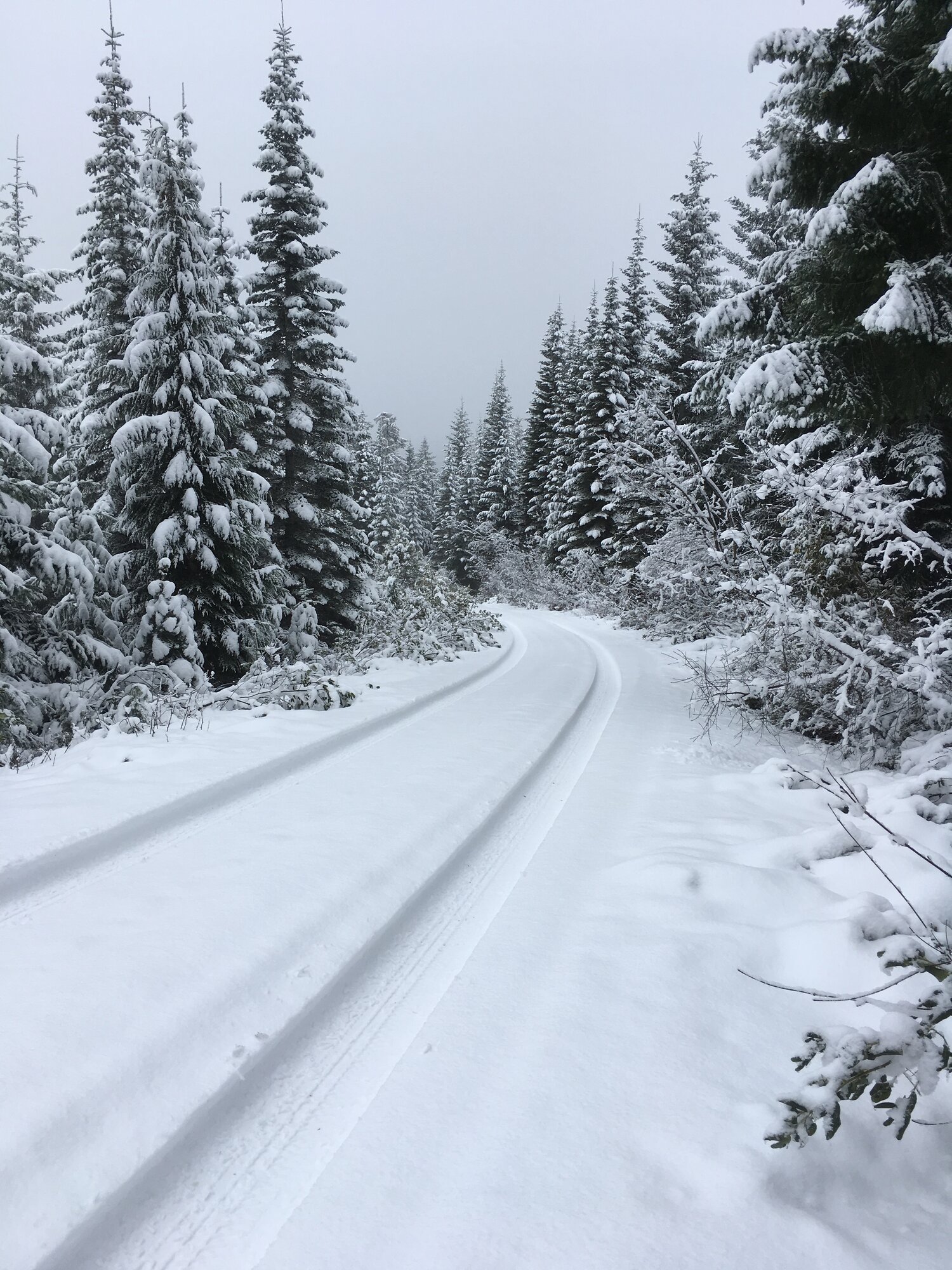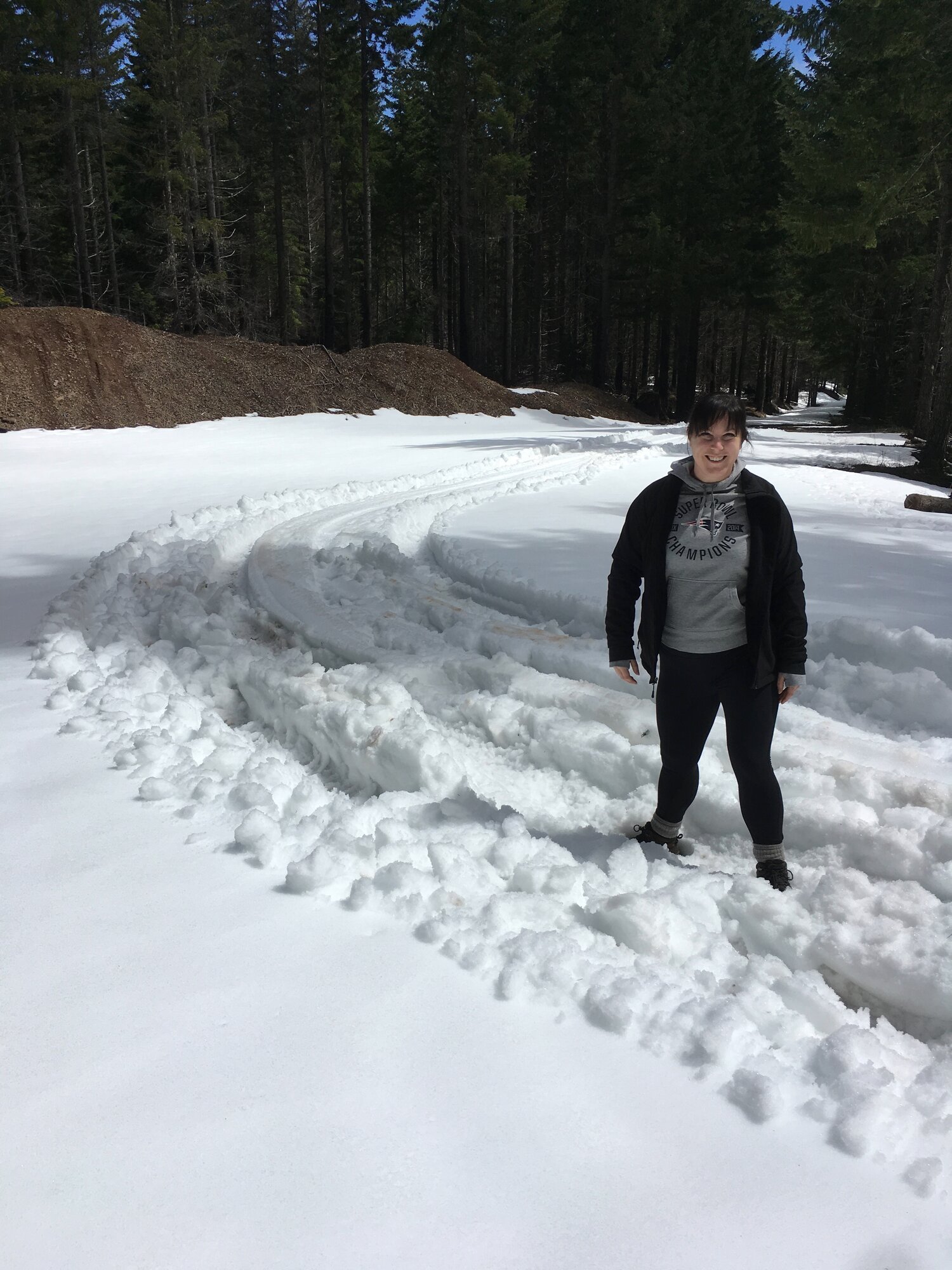How to Go Off-Roading In Deep Snow
Driving off-road in the snow can be an exhilarating experience, and an excellent way to get into some gorgeous scenery during the winter months. Yet for many people it can also be little intimidating. We put together this guide for new off-roaders who want to go snowheeling this winter, but don’t know where to start.
As a disclaimer, this article is primarily for drivers of relatively stock, but capable 4x4 and AWD vehicles, who do not have much experience driving off-highway in the snow. If your rig is on 37”+ tires that you routinely drop down to below 10 PSI this guide may be a little basic for you, but please feel free to chime in with your own advice in the comments!
Vehicle Selection
You don’t need to drive a lifted jeep on 40 inch tires to play in the snow, but some vehicles will perform better than others. Two wheel drive is sufficient for most forest roads in the warmer months, but when the snow gets deeper than a few inches you will want power delivered to all four wheels. Both all-wheel drive (AWD) and four-wheel drive (4wd) setups can get you into the snow. AWD generally performs better on plowed roads, once you get into deeper powder 4wd has the advantage. If you are curious about the difference between the two this article from Outside Online is a great place to start. A low range transfer case and locking differentials can help as well, but aren’t always necessary until you actually get stuck.
Our Tundra has around 11” of ground clearance from the pavement to the rear differential.
Ground clearance is the other major factor in vehicle selection. The more you have, the deeper you can go before you start plowing through the snow. Having more clearance also allows for the fitment of larger tires, which when aired down provide better floatation on top of the snow, and create a larger contact patch, but we will get to that next.
Tires for driving in deep snow
If you only upgrade one thing on your vehicle it should be tires. Lifts, bumpers, lightbars, and armor should all be secondary to the rubber that you put on your wheels. Most stock tires are designed to be cheap for auto manufactures, fuel efficient, and quiet for test drives. These traits will not help you when you are 10 miles into the backcountry and knee deep in snow. Selecting the right tire for your driving conditions is critical to minimizing stopping distance, maintaining traction, and preventing flats in rough terrain.
We highly recommend that you read our full post on tire selection for winter driving, but here is a quick rundown on the types of tires to consider for winter conditions:
Studless Snow Tires — These tires offer optimal performance when driving on paved roads in winter conditions. If you routinely commute on icy or snow packed roads this is your best choice. They are not ideal for driving off-road in deep snow due to their tighter tread patterns and less durable rubber compound that can easily be damaged by exposed rocks or gravel. Snow tires also need to be swapped for summer tires at the end of snow season.
Mud Terrain Tires — MTs arguably offer the best performance in extremely deep snow when run at reduced tire pressures. At the same time they tend to perform terribly on packed snow or ice. For that reason we do not recommend them for novice snowwhelers or people who have to routinely commute in winter conditions.
Snow Rated All Terrains — Snow rated ATs are a special category of tire that combine the best aspects of MT tires and studless snow tires. They will never be as good as an MT in deep snow, or a true studless snow tire on the road, but the compromise in characteristics is worth it to perform well in both worlds. Plus unlike studless snow tires they do not have to be removed for summer use. We highly recommend that most readers go with snow rated AT tires for those reasons.
Chains and Studs
Studs — For decades the common snow driving wisdom was that studs were the pinnacle in winter traction technology. While that may have been true at one point, today studless snow tires technology has advanced to the point where studs are only superior in a very limited set of circumstances, specifically sheet ice that is close to 32 degrees. Studless technology performs better in virtually all other conditions, critically including wet roads and dry pavement. Studs also have the problematic side-effect of ripping up our public streets and making conditions worse for other drivers.
Chains — Tire chains can be useful under certain conditions, but we generally avoid them as our AT tires function very well in the snow on their own. Chains can also cause vehicle damage if used incorrectly and have the potential to create a false sense of confidence in deeper snow. You may find yourself plowing on ahead when you should be turning around, only to get high centered in very deep powder. They can be useful to as a traction aid if you do get stuck and many states require that you at least have a set with you when driving through mountain passes in the winter, unless of course you have snow rated tires fitted.
Airing Down
Now that you have the right tires picked out, that brings us to one of the most important aspects of snow driving: tire pressure. Removing air from your tires helps to create a larger contact patch between the rubber and the road surface, which significantly increases traction and has the added benefit of smoothing out a bumpy ride. This process is called airing down. In a pinch it can be accomplished by depressing your tires valve stem core with a stick or small screwdriver, but ideally would be performed with a tool like the ARB Tire Deflator. Before you go deflating your tires, make sure that you have a portable air compressor available to re-pressurize your tires when you get back to pavement.
For a typical snow run we will drop our tire pressure down to 18-20 psi. This pressure provides a moderate amount of flotation while reducing the time it takes to air back up at the end of our adventure. If the snow gets deeper, or we get stuck, we drop down to around 10 psi to further increase traction and flotation. Depending on the conditions some off-roaders will go even lower than that, but please note that as pressure drops the risk of the tire coming off of the wheel increases, this is called losing or unseating a bead. There are ways to fix this in the field with a ratchet strap and a powerful enough air-compressor. If you plan on dropping to very low pressures it would be worth traveling with others who have done this before, or thoroughly researching the procedure in advance.
Group vs Solo Driving
Due to the increased risks associated with driving in winter conditions it is always a good idea to travel in groups when possible. Having buddies along not only makes the experience more fun, but also provides the means to pull your vehicle out if it gets mildly stuck or drive you back to safety if you really mess up. If you don’t have friends who are into wheeling social media platforms like Facebook and Instagram are a great way to tag up with like minded off-roaders who want to play in the snow. Depending on where you live there may also be off-roading groups in your area who would be happy to take you on a run.
Solo trips are doable but heading out alone requires an adjusted risk tolerance. You will want to be extra cautious about getting stuck, and ready to turn around much earlier than you would with other vehicles available to pull you out. The survival and recovery gear that bring along becomes all the more important on solo trips. Specifically when traveling solo in the winter you should consider having a satellite enabled communication device like a Garmin InReach and a quality. Just make sure that you have the right recovery accessories for your winch and know how to use it safely before departing alone.
Weather
This may sounds like a no-brainer, but checking the weather forecast for the area that you are heading to before leaving home is critically important. Whiteout conditions, high humidity, and above freezing temperatures can all be problematic for snow wheeling. It is also worth noting that you should track on the weather for the 12-24 hour period that follows your planned return. Sometimes storm fronts move faster than expected, sometimes trips run long, and sometimes you find yourself stuck overnight. If a big storm is set to hit on the back end of your trip you may want to stay home. Along those same lines, it is important to give yourself plenty of buffer time for your drive. Days are short in the winter, so leaving early is preferable, unless you specifically plan on driving at night in the snow.
Snow Conditions
The quality of snow that you encounter on the trail will have a huge impact on how far and deep you make it on any given trip. It is significantly easier (and more fun) to drive in fresh dry powder than older snow that is too icy or too slushy.
Fresh dry powder like this is very easy to drive through.
Wet sloppy snow like this will get your truck stuck in a hurry.
We highly recommend avoiding driving through spring snow, especially in the Pacific Northwest. It is nasty stuff that will ruin your day in a hurry, take our word for it!
Driving Techniques
The name of the game when driving in the snow is finesse. If you apply too much pressure to the gas pedal you will get stuck, if you brake too hard you will slide, and if you steer too quickly you will lose control. Steady “just right” movements are key.
Here’s an example of why you don’t go full send into snow drifts, or drive into spring snow. It may be hard to tell from this shot but we were very much high centered just a few feet from exposed gravel.
Throttle control — Keep your pressure on the throttle constant, and the RPMs low. If your forward progress gets stopped take your foot off the gas immediately to avoid digging in with your freely spinning tires. Slowly backup, then push forward again with slow and steady acceleration to plow forward. If you get too much of a runup you may find yourself sliding across the top of the snow only to get high centered shortly after. We have done that before and can tell you it is not fun. When the snow gets deep you may have to repeat this process many times, slowly pushing forward. If progress stops completely you can air down further or implement other traction aids.
Slowing down — Braking requires a similar mindset to throttle control, avoid pushing down on the pedal too hard. In low traction conditions the best way to avoid hard braking is to control your speed in the first place. Before hitting a turn or going down-hill make sure to back off the throttle and decrease your momentum. If you need to brake apply slow steady pressure. Even with the best ABS systems you may find yourself skidding when the brake is completely depressed.
Driving in established tracks can feel like a ride at Disneyland gone wrong. In these conditions it is best to keep a loos grip on the wheel.
Handling — When it comes to steering in the snow, we have found that keeping a light touch on the wheel and letting the vehicle have a little wiggle room helps a lot. If you do find yourself in a skid resist the urge to turn hard in the opposite direction. Instead, turn the wheel into the skid to regain control before correcting course.
Escaping tracks— Unless you’re rig is the first to hit the trail you will eventually find yourself driving through deep tire tracks. These existing tracks can be good or bad depending on the situation. On one hand you don’t have to break trail, on the other you will at times need to get out of the track. Getting used to this maneuver takes a little bit of practice, usually it requires a quick turn of the steering wheel, followed by a return to the straight ahead position.
Recovery Techniques
Full disclaimer here: we are not recovery experts. We have experience using a variety of recovery techniques to get unstuck, but we do not have any formal training in this area. There are plenty of resources available online to walk you through recovery techniques. We suggest digging into these before a trip, or going with people who have been snow wheeling for a while,
Even the best drivers will eventually find themselves stuck in the snow. As mentioned previously, if your forward progress is stopped do not continue to spin your wheels. First attempt to reverse carefully. If that doesn’t work, it is highly likely that you are high centered by the snow.
Consider airing down more — Further reducing your tire pressure, as low as 5 PSI, may be enough to give you the traction and flotation that you need to get unstuck. It is possible to go even lower, but as I mentioned earlier that should only be done if you are capable of resetting a tire bead.
Use your traction boards — If you have traction boards available place them under the tires that are struggling to gain traction. Unless you have locking differentials you will want to use each pair of boards on the same axle. You may also have to dig out the snow under your tires a little bit to ensure that there is enough contact between the board and the tire. When the boards are placed apply steady pressure to the gas to get yourself out. Depending on the circumstances it may take a little trial and error to get the board placement just right. When snowheeling we now carry two pairs of traction boards so that one can be placed under each tire.
This recovery took a little bit of digging and four traction boards to pull off.
Have a buddy pull you out — If the traction boards don’t do the trick you may need a little pull from a friend to get out. Dynamic recovery straps work best in the snow since they allow the recovery vehicle to build momentum with a running start. Static tow straps can work as well but must be slowly stretched tight before the recovery vehicle starts to pull. Recoveries of this nature can be very dangerous, so do some research on proper safety procedures before attempting one. On that note it is critically important to never use a ball hitch as a recovery point. Doing so can result in the ball sheering off the hitch under tension, and likely flying towards the the recovery vehicle at deadly speeds.
When in doubt dig it out — A shovel is your best friend in the snow. Sometimes using a little muscle is the only way to free a stuck vehicle. If you are high centered and have to dig out start by clearing the snow on the side of your rig. Doing so will provide the room that you need to clear the snow from the undercarriage. If you have traction boards, branches, or any other traction aids available, position them under the tires before you start digging under the frame.
Winching — Installing a winch on your vehicle does involve a few tradeoffs (mainly cost and front end weight) but it can be a gamechanger to have when driving off-road in the snow. Before heading out into the snow make sure that you have the right accessory gear for your winch, get some training on how to use it safely, and practice with it before you need it.
Learn more
Check out the video linked below from Overland Pacific Northwest. It covers a lot of the topics that we discussed in this post, as well as a few more advanced techniques.











